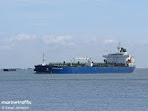An astonishing scene played out in the Oval Office on Friday
as President Trump and Vice President Vance got into a shouting
match with Ukrainian President Volodymyr Zelensky, reports The Hill.
Amid angry crosstalk, Trump told Zelensky “without us, you
don’t have any cards” and “you’re gambling with World War III.” Vance, for his
part, accused Zelensky of being “disrespectful.”
Zelensky had taken issue with Trump’s depiction of him as
having so much “hatred” for Russian President Vladimir Putin that it made it
hard to end the conflict.
The Ukrainian president also pushed back on Vance’s
suggestion that diplomacy could end the war — insisting that his nation
had previously adopted that approach after Russia annexed Crimea in 2014, only
for Putin to launch a full-scale invasion in 2022.
The clash derailed the proposed signing of a deal granting
the United States some rights over Ukraine’s mineral deposits. A news
conference between Trump and Zelensky that had been scheduled was abruptly
canceled, and Zelensky left the White House without further comment.
Here are five big takeaways:
A row
heard around the world
It’s hard to exaggerate the seismic shock created by the
squabble in the Oval Office.
The political world, in the US and internationally, was
instantly aflame over what had taken place. On cable news, usually loquacious
anchors were left struggling for words.
It’s been years, if ever, since such a spectacle was seen on
public display at the White House.
Inevitably, the shock spurred fevered speculation. One big
question was whether Trump and Vance had intentionally provoked Zelensky, whom
Trump recently dubbed a “dictator,” into a confrontation.
The other was whether the Ukrainian leader had reacted too
intemperately in the moment, to the detriment of his national interests.
Certainly, Trump’s initial comments about Zelensky’s
“hatred” for Putin carried a disparaging tone that it is hard to imagine being
expressed toward any other US ally who was trying to repel an invasion.
Likewise, Vance’s role will be closely dissected, especially
his reference to Zelensky being “disrespectful” and his demands that the
Ukrainian president say “thank you” for US aid.
But Zelensky’s volleys back made it clear he was not going
to adopt the mollifying tone used by the week’s other high-profile visitors to
the White House, French President Emmanuel Macron and British Prime
Minister Keir Starmer.
The White House has seemed to celebrate the encounter.
Meanwhile, a photo posted by CNN’s Kaitlan
Collins of the Ukrainian ambassador to the US with her head in her
hands during the encounter told its own story.
Now
what?
The big question is where things go from here.
The minerals deal was presented, at least in some quarters,
as a way to reimburse the US for future assistance to Ukraine, but Trump had
been conspicuously vague on the key point of whether Washington would offer
firm security guarantees in return.
Now, with that deal presumably shelved for the foreseeable
future, nobody honestly knows what happens.
Zelensky could lean more heavily on Europe for both military
and diplomatic support. Macron and Starmer have far more pro-Ukrainian
viewpoints than does Trump.
Italian Prime Minister Giorgia Meloni, who has more of a
Trump-like worldview, called on Friday for an immediate summit between the
US and European nations to discuss Ukraine.
If the spigot of US aid is to be choked off and a piqued
Trump is now fully embittered against Zelensky, the future looks bleak from a
Ukrainian perspective.
It’s also worth noting that neither the US nor its European
allies are willing to put boots on the ground during the war itself, for fear
of being drawn into their own war with Russia
The suggestion so far is that the Europeans might help shore
up a peace agreement — if one is reached.
Democrats,
Trump critics blast Trump for helping Putin
Prominent Democrats blasted Trump and Vance for how they
conducted the meeting with Zelensky, and some other Trump foes joined in.
Senate Minority Leader Chuck Schumer on social media accused
Trump and Vance of “doing Putin’s dirty work” and pledged that “Senate
Democrats will never stop fighting for freedom and democracy.”
Sen. Elizabeth Warren contended that it was “shameful
and dangerous” for Trump to engage, as she saw it, in “treating the destruction
of a democracy as a political show — throwing Ukraine to the wolves and doing a
favor for Putin.”
Meanwhile, former Republican congresswoman and leading Trump
critic Liz Cheney said on social media that Trump and Vance had
“attacked Zelenskyy and pressured him to surrender the freedom of his people to
the KGB war criminal who invaded Ukraine.”
Cheney added, “History will remember this day— when an
American President and Vice President abandoned all we stand for.”
Trump loyalists wear such disapproval as a badge of honor,
of course. But there is no mistaking how deep the dismay runs on the other
side.
Republicans
counter that Trump stood up for American interests
GOP voices rushed to acclaim Trump — and often bash Zelensky
— for the way the Oval Office drama went down.
Broadly, the chorus of Republican approval viewed Trump as
standing up for American interests and cast Zelensky as an ingrate.
Treasury Secretary Scott Bessent told Bloomberg
that the Ukrainian president “chose to let things go into a downward spiral on
worldwide television.”
Sen. Lindsey Graham said he had “never been more proud”
of Trump and blamed Zelensky for a “disrespectful” display.
“I don’t know if we can ever do business with Zelensky
again,” Graham said.
Sen. Bill Hagerty, alluding to the contrast with the
Biden presidency, wrote on social media, “The United States of America
will no longer be taken for granted. The contrast between the last four years
and now could not be clearer. Thank you, Mr. President.”
The White House Office of Communications collated many such
responses and sent them out in an email with the subject line, “Support Pours
in for President Trump, VP Vance’s America First Strength.”
Happiest
of all: Russia
For all the delight expressed by some of Trump’s domestic
allies, the real gloating seemed to come from Moscow.
Putin ally Dmitry Medvedev, who served as Russia’s president
more than a decade ago, celebrated on social media that “the insolent pig
finally got a proper slap down in the Oval Office.”
Medvedev also endorsed Trump’s view that Zelensky was
gambling with World War Three.
The Associated Press (AP) quoted a Russian lawmaker, Andrei
Klishas, as describing the outcome of the meeting as “a brilliant result.”
Klishas, per the AP, wrote on Telegram that Zelensky had
“played his role of a ‘president’ poorly in the White House and was thrown out
for bad behavior and disrespect towards the US.”
Whatever Trump’s intentions, the current picture could
hardly look rosier from the Kremlin’s perspective.
Russia has been advancing on the battlefield, Ukraine is now
starkly at odds with its chief benefactor and it’s not at all clear Trump will
press Putin for major concessions in any peace deal.



















